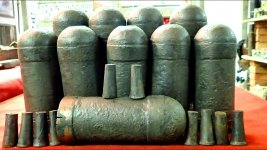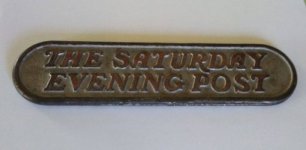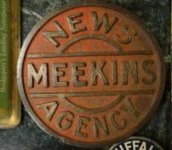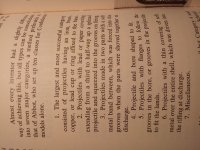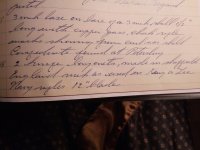Force_of_Iron
Sr. Member
This is from the same collection as the VB grenade. It is a real enigma. You guys solved that one though so lets put the experts to work again.
The artillery collection was primarily civil war but was inclusive up to about 1910
Is a cast iron core with a copper jacket wrapped around it. The copper is not real thick but is fairly heavy. About the same guage as a circuit board.
I read somewhere long ago that the confederates experimented with something like this it didnt have the right width to length ratio. This caused a problem to load and succesfully fire at times as it could slightly turn and jam so the project was abandoned. I recall it did have some field tests at Petersburg. My memory is uncertain but I believe that is correct.
The key perameter is the width of course as it has to go into the bore. It measures 3 1/8 with the copper jacket slightly less than 3 with just the core. Im not sure that you could ram it down the barrel of most cannons but perhaps you could. If you did the bolt would be somewhat pre rifled before firing. It has indentations in the copper at the base which probably has the dual purpose of clamping it on but to ease the rifling during loading.
Anyone got any ideas?
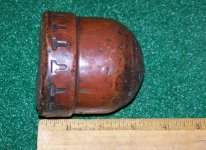
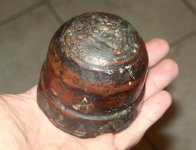
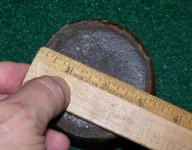
The artillery collection was primarily civil war but was inclusive up to about 1910
Is a cast iron core with a copper jacket wrapped around it. The copper is not real thick but is fairly heavy. About the same guage as a circuit board.
I read somewhere long ago that the confederates experimented with something like this it didnt have the right width to length ratio. This caused a problem to load and succesfully fire at times as it could slightly turn and jam so the project was abandoned. I recall it did have some field tests at Petersburg. My memory is uncertain but I believe that is correct.
The key perameter is the width of course as it has to go into the bore. It measures 3 1/8 with the copper jacket slightly less than 3 with just the core. Im not sure that you could ram it down the barrel of most cannons but perhaps you could. If you did the bolt would be somewhat pre rifled before firing. It has indentations in the copper at the base which probably has the dual purpose of clamping it on but to ease the rifling during loading.
Anyone got any ideas?








